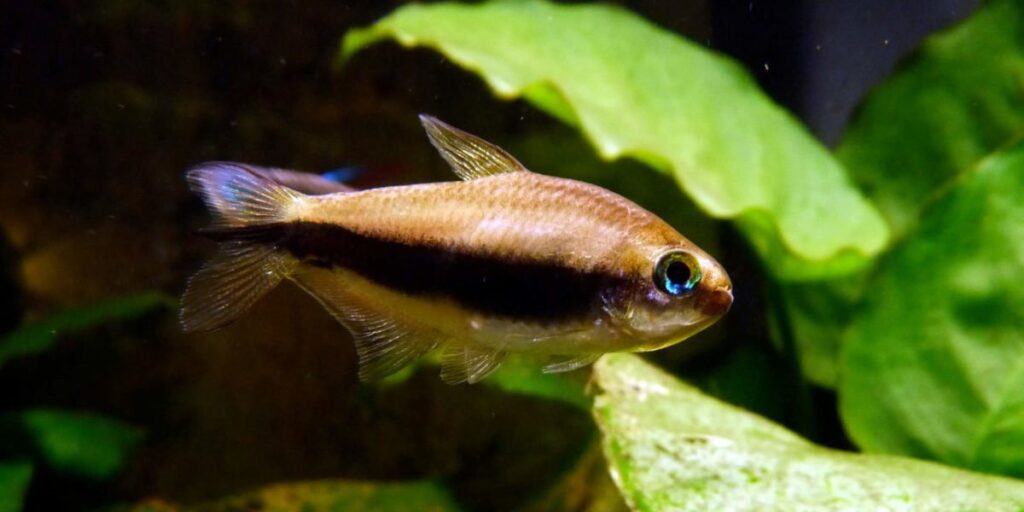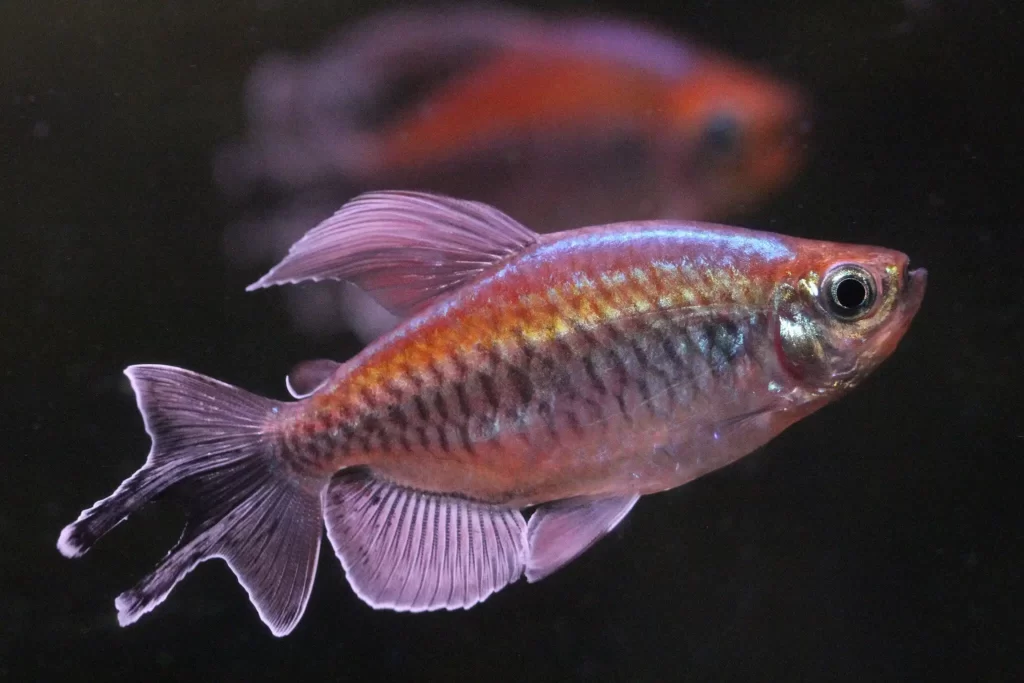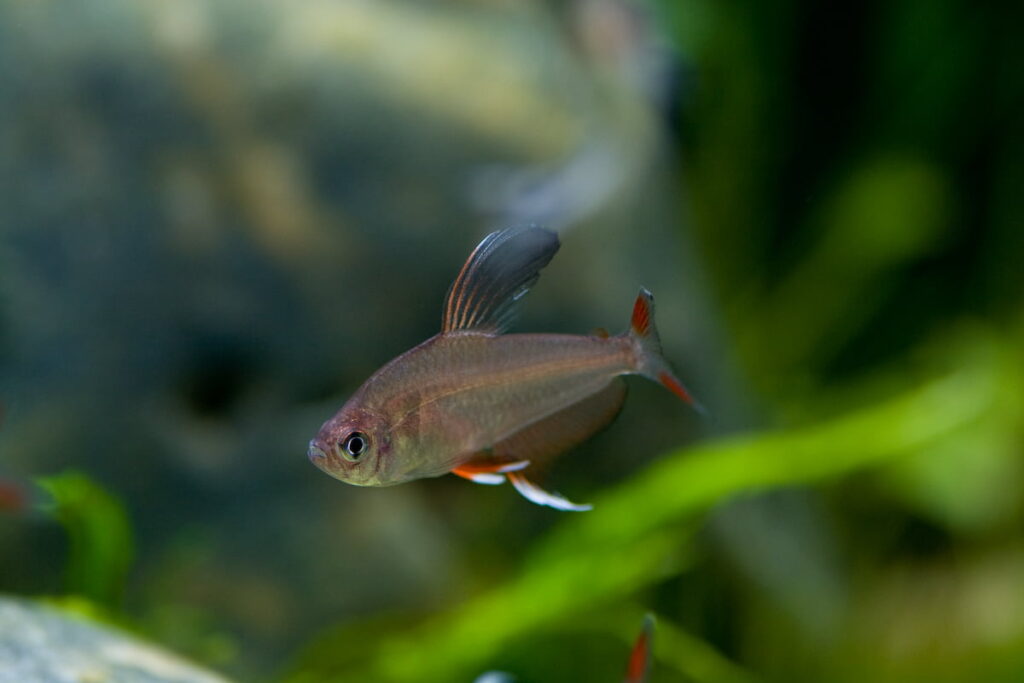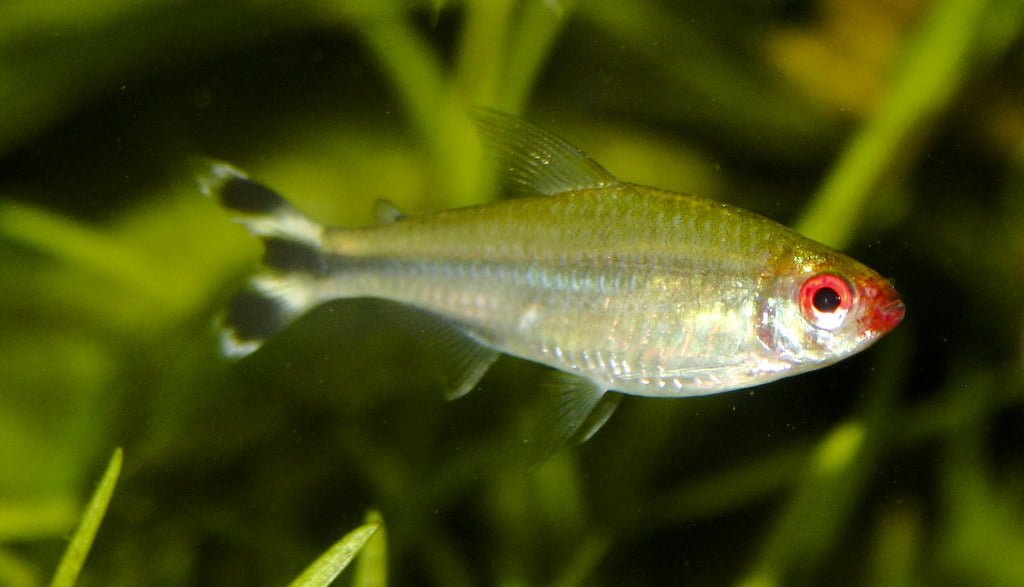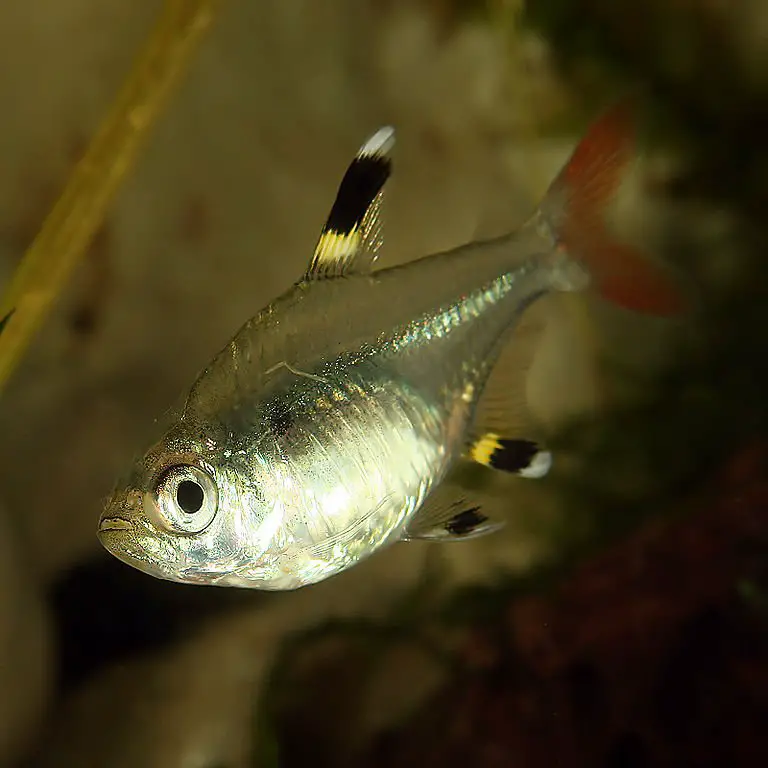Tetra fish are the most common aquarium fish all over the world. Tetra Fish has been in very high demand among the fish enthusiasts. This is because of the tetra’s small size, bright coloration, easy-care, and maintenance and the hardiness. To add, the water parameters that you will require for tetra fish is easily achievable.
All the mentioned factors make tetra fish a reliable fish to both beginner fish keepers as well as experts. The tetras are very entertaining to look at and can get along with almost all non-aggressive species.
Therefore, we can say that the tetra possesses all the qualities that every aquarium owners look for. Different aquarium species have specific water conditions needed so that they can thrive in the aquarium. This is an essential part of the aquarium set-up as providing a pleasant, healthy environment for your fish is what makes your tank attractive.
In this article, we will get to know the different water parameters required by tetra fish. Keep reading to know more.
What is Water Parameter?
Water parameters simply can mean different range of water that needs to be maintained so that the water environment matches the habitat living with those particular conditions. For an aquarium, these water parameters must include pH level, temperature, and hardness.
Other significant concentrations that you will need to check regularly are the ammonia level, nitrite level, and the nitrate level.
The water parameters are very vital to check and regulate the condition of the water and to know what you will need to do to stabilize the tank environment.
Why is Maintaining Water Parameter Important?
Water parameters help you monitor the quality of the water. Checking the water parameters provides guidance on what changes have occurred in the water. When you see that the settings are changing, you will be able to bring back the reasonable condition of the water by performing the required measures.
When you do not check the water parameters, especially of your aquarium tank, you will not realize if the environment and water are still suitable for your fish or not. The settings will inform you about different pollutants, toxins, etc. and helps you to keep your fish healthy.
If the water quality of your tank is poor, you should know and perform the necessary changes required. Doing this will prevent any damage to the health of your tank species. Maintaining the parameters will also preserve and maintain the aquatic ecosystem.
Cleaning the tank is also a vital part of a sound tank ecosystem. Find out more about how to clean the tetra tank.
Water Parameters List for Tetra Fish
You will need to regulate the water parameters once you have set-up the tank. Before you add any of your tetras in the newly set-up tank, you will need to make sure all the settings are met.
It is vital that you establish these parameters beforehand, as the newly set tank system will not have nitrifying bacteria. You will need to cycle your tank and check up on the concentration of toxins like ammonia and nitrites.
If you introduce your tetras directly into the fresh new tank, it may be possible that your fish will not survive the compounds and contaminations in the tank. Hence, it is crucial that you first meet the entire requirement before you introduce the fish into the container.
Let us see all the water parameters needed in this section.
The pH Level
The pH of the water is one of the most crucial ones. Let us start with what precisely pH level is?
The pH stands for the power of hydrogen. Hence, pH is a measure of hydrogen ions. You need to understand that lower the pH, the water is more acidic. Moreover, if the water has a rise in pH level, then it means that water is high in alkalinity.
As we are talking about the tetra fish, you should know what kind of pH these fish require. The main points that you should remember are that tetra is a freshwater, tropical fish. This means that the tetras will need slightly more acidic water than other species.
To measure the pH level, 7 is the neutral point. Below seven means the water is acidic, and above seven ways, the water is basic or alkaline. For tetra fish, you will need the pH level within the range from 5.5 to 7.
Whenever you need to adjust your pH level, make sure that you do it incrementally and not at once. Doing this will help the aquatic life in your tank to gradually adapt and prevent sudden changes causing stress.
Hardness
The water hardness measurement is GH. This particularly maintains the calcium and magnesium ions present in the water. In the aquarium, we can measure the carbonate hardness, KH. The KH measures the carbonate and bicarbonate ions.
When the carbonate ions bond with the hydrogen ions, you will get your pH. If there is an increase in bonding, then the pH will increase, and vice versa. Most of the experts will recommend you not to adjust the KH unless it is necessary.
To maintain the hardness for tetra fish, you will require the moderately soft water. This means that your aquarium hardness will need around 50 to 150ppm. This means that it is approximately 6 to 12 Degrees. If measuring in the KH, then you will need around 4KH to 8KH.
Again, if you have to readjust the hardness of the tank, make sure you will do it steadily without any sudden changes to the water.
Temperature
Temperature is an integral part of any aquatic life, especially tetra fish. As the tetras are cold-blooded animals, these fish rely on the temperature to process the food they eat. Temperature helps in the convenient metabolism of the fish.
Tetras are tropical fish. Hence, in order for your tetras to have a suitable environment in the tank as they would have in the wild, you will need a proper maintaining of the temperature.
The ideal temperature for the tetra fish tank will be 75 to 78 degrees Fahrenheit. You will need to uphold this temperature at any cost because outside of this temperature, the tetras will not be very comfortable.
A drastic fluctuation in the temperature can cause the tetras to stress out. This will hamper the health of the tetras, and they will not be happy in the tank. Additionally, their lifespan will also be shorter.
Ammonia Level
For aquatic life, ammonia is a dangerously toxic chemical. This does not do any good for the species in your aquarium. The presence of ammonia is quite dangerous to your fish, damaging their health, causing diseases and sometimes, even death.
One of the main reasons that you should never keep your tetras in a fresh tank is because of the lack of nitrifying bacteria in a new tank. When a tank does not contain any nitrifying bacteria, the ammonia and nitrite levels in the tank will be at the peak.
Hence, to bring down the ammonia levels, you will need to follow the partial water changes in the tank. Once the tank cycle is known as the “nitrogen cycle” that is established, the presence of ammonia should be undetectable.
Therefore, the tetras will need a tank environment that has 0 ppm of Ammonia at all times.
Nitrite Level
The nitrite level is a part of the nitrogen cycle of the tank. In the second stage of the cycle, the bacteria convert ammonia into nitrite. Bacteria such as Nitrosomonas and Nitrobacter needs a constant flow of oxygen so that they can perform the nitrogen cycle.
Once the nitrogen cycle is established, you must not detect any trace of nitrites. Even though nitrite is not as toxic as ammonia, it can be lethal to your fish overtime.
Nitrites in your fish tank mess up the hemoglobin if your tetras. This means it fluctuates and interferes with the oxygen metabolism of your tetras.
Due to this, the nitrite level in your tetra tank should be 0 ppm. A slight increase in the nitrite level to 0.5 ppm is tolerable. However, the ideal nitrite level should be 0 ppm.
Nitrate Level
The final stage of the nitrogen cycle is maintaining the nitrate level. Nitrate is the least toxic chemical among the nitrogen compounds. This makes it bearable for tetras to have some presence of the nitrates in the tank.
The bacteria break down the ammonia into nitrites and convert the nitrites into nitrates. It is common for you to detect some traces of nitrate in your tetra aquarium.
However, having nitrate means seeing the growth of algae. You may also see your tank water turn green. Nitrates might also cause stress in your aquarium species. Therefore, it is best to keep the nitrate level to the minimum as well.
Water changes are the way in which you may be able to lower the nitrate level. For the tetra fish tank, you will need the nitrate level to be around less than 40 ppm. If the nitrate level is 0, then it is the ideal situation, and you do not have to change it.
Understanding Nitrogen Cycle
Establishing nitrogen cycle is very important in a newly set up aquarium. As new tanks do not have colonies of microbes providing biological filtration, the tank must have the cycle.
In the beginning, there is an excellent increase in ammonia. The Nitrosomonas Bacteria consumes ammonia and produces nitrites. Nitrite is also a very harmful chemical, but fish can stand nitrites more than ammonia.
Now, bacteria called Nitrobacter consume nitrites and release less toxic chemicals called Nitrate. Nitrates are less harmful chemicals, and fish can survive in a tank with some amount of nitrates.
Therefore, the nitrogen cycle is the process of breaking down toxic and harmful chemical wastes into less dangerous compounds.
How to Maintain Stable Water Parameters for Tetra Fish?
When you first set up an aquarium, you should know that you cannot add fish instantly. The first step is to encourage the growth of beneficial bacteria. After a while, when the beneficial bacteria kick in, there will be a balance in the water chemistry.
You should continue to maintain the water parameters in your tank. There are some things you can do daily, weekly, and monthly. If you are able to follow these steps, there will be less chance of fluctuations in the water parameters.
Daily Checking
The daily checking on your aquarium will not consume too much time and effort. In regular maintenance, you must check the water temperature. Slight variation in the temperature will not hamper, but when there are significant changes, you will need to take action. Doing this will alert you in case of changes.
Weekly Checking
For any aquarium water, there must be the replacement of clean water. For this, you will need to know about partial water changes. It is the process of removing debris and a certain amount of water from your tank without having to remove any substrate or water.
You will need to carry out about 10% of partial water replacement every week. Regular water replacement is an excellent way of keeping the nitrate levels of your tank reasonable.
Apart from the water changes, you can test the water’s pH level, ammonia level, nitrite level, nitrate level, and the hardness of the water. You may also need to clean algae developed.
Monthly Checking
The monthly maintenance of the aquarium may take some effort. Your aquarium may need a thorough cleaning.
You can start by 25% to 30% water replacement. Remember that the frequency and percentage of the water changes need to be consistent. Next, you can vacuum the gravel and inspect the filters. Filters may have trapped dirt, gravel stuck, which may disturb their operation. Hence, you will need to check your filter every month.
Cleaning the tank walls as well as any plastic decorative items will also be useful. You can add new live plants as well.
What kind of water can you use?
There are different types of water you can use in your fish tank. Determining the safest form of water is integral.
Using Tap Water
Tap water is the water supplied to every household. We humans use tap water for various purposes. Hence, this water is generally of high standards and quality. However, can you say the same for your tetra fish?
There are certain chemicals present in the tap water, which disinfects the harmful bacteria. Hence, there can be a sufficient amount of chlorine in tap water. The chlorine may not have dangerous for humans but is deadly for fish.
Therefore, you can use tap water in your aquarium, but you will have to condition it first correctly. Some people also try to aerate the tap water vigorously in order to eliminate the chlorine.
Using Rain Water
In cases of countries like the USA, rainwater does not contain any pollutants. Hence, you can use it in the aquarium. Species such as tetras are able to live in pure rainwater having almost zero Total Dissolved Solids (TDS). Tetras prefer soft, acidic water.
You can use pure rainwater with 5% or 10% tap water. The tap water you will use should be conditioned first. After doing this, you will need to monitor the parameters closely.
Using RO Water
RO stands for Reverse Osmosis. RO is the process in which unwanted molecules and large particles from drinking water are removed by using a partially permeable membrane.
Using RO water in the fish tank is highly in demand nowadays. Mostly because when you filter tap water with reverse osmosis, you will remove all the undesirable components from the water. The resulting water contains minimal concentrations of dissolved solids and is nearly pH neutral with almost no hardness or alkalinity.
However, using RO water can be expensive. As long as you can neutralize the tap water and rainwater, you may not need to use the RO water. If you need to lower the pH level or the hardness, then you can use the RO water. Additionally, you can also use RO water, where the water is poorly contaminated.
Conclusion
Whenever you are setting up a tetra fish tank, the first thing you will need to know is how to get the water parameters right. There are different equipment and test kits you may be able to use for the testing.
It is effortless and easy to use these test kits. You can ask your local pet store experts to guide you if you have any questions.
It will be a piece of cake if you follow the above water parameters for your tetra fish to give them a stable water environment. You can learn more about tetra fish in our other articles as well.
